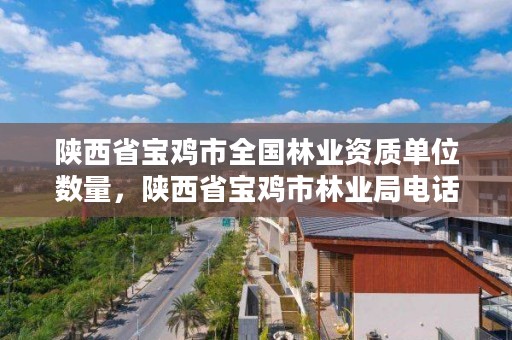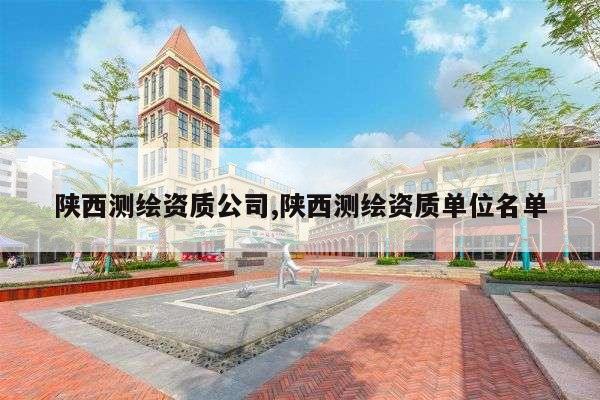地球变绿,中国做了多大贡献?卫星遥感有图有真相
This conclusion has been reached from data compiled by NASA's Aqua and Terra earth observation satellites.
From 2000 to 2017, the global areas covered by greenery increased by 5%, of which, 25% of such territory lies in China. In fact, China only accounts for 6.6% of global vegetation coverage. So, how did these changes happen?

添加微信好友, 获取更多信息
复制微信号
To this end, we have invited experts from the Institute of Remote Sensing and Digital Earth, Chinese Academy of Sciences who have been engaged in monitoring vegetation change for a long period of time, to explain the process with the sufficient statistical data and satellite remote sensory images.
今年早些时候,一篇由美国波士顿大学领衔、美国宇航局主要资助的多国合作研究论文发表在《自然-可持续发展》期刊上,这篇题为《中国和印度通过土地利用管理引领世界变绿》的论文发现:2000—2017年,中国和印度主导了全球陆地变绿(植被叶面积的增加)。更重要的是,在中国变绿的过程中,森林贡献了42%,大于农用地的32%,远大于印度4.4%的森林贡献率。
Earlier this year, a multinational cooperative research paper led by Boston University and mainly funded by NASA was published in Nature Sustainability . The paper was entitled ' China and India Lead in Greening of the World Through The Land-Use Management ', and found that during the period from 2000 to 2017, China and India dominated global land greening (increases in leaf-covered areas). More importantly, in the process of turning China greener, forests contributed 42%, greater than the 32% contribution of agricultural land and much more than India's forest contribution of 4.4%.
▲ Source: ,
China's afforestation and forest protection are crucial parts of the results achieved.
从20世纪70年代以来,中国先后启动了许多重大生态建设工程,其中与陆地变绿直接相关的至少有6个:“三北”防护林工程、天然林资源保护工程、退耕还林(草)工程、长江/珠江流域防护林工程、京津风沙源治理工程、退牧还草工程。这些工程覆盖了中国的绝大部分地区。
Since the 1970s, China has successively launched many large ecological projects, including six projects which are directly related to land greening: the "Three-North" Shelter Forest Program, the Natural Forest Resource Protection Project, the Project of Returning Farmland to Forest (Grass), the Shelterbelt Forestry Project of the Yangtze/Pearl River Basin, the Beijing-Tianjin Sandstorm Source Control Project and the Project of Returning Grazing Lands to Grasslands. These projects cover most of the regions of China.
“三北”防护林工程 ,1979年开始实施,涉及13个省市区,工程建设总面积406.9万平方公里,占全国陆地总面积的42.4%,至今总投资约500多亿元。
Beginning in 1979, the "Three-North" Shelter Forest Program involving 13 provinces, autonomous regions and municipalities directly under the Central Government, has achieved a total construction area of 4.069 million square kilometers, accounting for 42.4% of China's total land area , with total investment adding up to more than 50 billion yuan so far.
天然林资源保护工程, 1998年开始试点,涉及17个省区、724个县、160个重点企业、14个自然保护区等,到2004年累积投资488.3亿元。
Beginning in 1998, the Natural Forest Resource Protection Project involving 724 counties, 160 key enterprises and 14 nature reserves in 17 provinces and autonomous regions, reached cumulative investment of 48.83 billion yuan by 2004.
退耕还林(草)工程, 始于1999年,涉及25个省区、1897个县区, 是迄今为止世界上最大的生态建设工程 ,仅中央投入的工程资金就超过4300多亿元。
Having been started in 1999, the Project of Returning Farmland to Forest (Grass) involves 1,897 counties in 25 provinces and autonomous regions. It is one of the largest ever ecological project to be carried out worldwide. The central government alone has invested more than 430 billion yuan in the project.
长江/珠江流域防护林工程 ,一期为1989—2010年,根据森林清查资料及林业统计年鉴,共造林约6.3万平方公里、育林约5.5万平方公里。二期涉及的范围更广,其中长江流域防护林二期工程包括17个省(市)的1033个县(市、区),规划造林任务6.9万平方公里。
Phase I of the Shelterbelt Forestry Project of the Yangtze/Pearl River Basin was carried out between 1989 and 2010. According to forest inventory data and the forestry statistical yearbook, a total of 63,000 square kilometers of forest were planted and 55,000 square kilometers were afforested. The Phase II covers a wider range, of which the Shelterbelt Forestry Project of the Yangtze River Basin Phase II includes 1,033 counties (cities and urban districts) in 17 provinces (municipalities directly under the Central Government) with a planned afforestation task of 69,000 square kilometers.
京津风沙源治理工程, 始于2002年,涉及北京、天津、河北、山西及内蒙古等五省(区、市)的75个县,总面积45.8万平方公里,一期工程初步匡算投资558亿元。
Having begun in 2002, the Beijing-Tianjin Sandstorm Source Control Project involves 75 counties across five provinces (autonomous region and municipalities directly under the Central Government) including Beijing, Tianjin, Hebei, Shanxi and Inner Mongolia, with a total area of 458,000 square kilometers. The initial estimated investment for Phase I is 55.8 billion yuan.
退牧还草工程, 自2003年以来,北方7省区退牧还草工程约64万平方公里,中央已累计投入资金295.7亿元。
Since 2003, the Project of Returning Grazing Lands to Grasslands has covered 640,000 square kilometers in seven northern provinces and autonomous regions. The Central Government has invested 29.57 billion yuan in the project.
The most effective way to understand the results of these afforestation projects in China is to observe changes in collected data. In the field of ecological environment change monitoring, the most widely used technology is that of acquiring images of the earth for continuous monitoring through remote satellite sensing.
Here are a few sets of data and images which illustrate the reasons behind this green miracle.
In the field of remote sensing applications, the "vegetation index" is widely used for evaluating vegetation coverage and vegetation growth and the "normalized difference vegetation index" (NDVI) is most widely used. In general, the higher the NDVI, the higher the vegetation coverage.
The NDVI(at the national level) in China, India and most European countries show significant increases in 2015 compared with 1982, indicating that the land of these countries has turned significantly green. However, the NDVI in the countries in North America, Australia, Africa and South America showed a decreasing trend in 2015 compared with 1982.
Another measurement indicator is net primary productivity (NPP) .
NPP is the amount of photosynthetic products or organic carbon formed by plants after converting the carbon dioxide in the atmosphere through photosynthesis, and is the material basis for the survival and reproduction of other organisms in the ecosystem.
We quantifies moderate-resolution imaging spectroradiometer (MODIS) NPP from 2000 to 2014 at the country level, and the results show that the combined NPP for 53 countries represents 90% of global NPP. The top three and top 12 countries accounted for 30% and 60% of total global NPP, respectively. China accounts for about 5% of the world's total NPP, ranking 4th globally. However, it cannot be ignored that western China is mostly covered by desert or sparse vegetation, and the average NPP per unit area in China is about 300gC/㎡/y — not high in the global ranking, at a similar level compared to Canada, Australia, India and other countries.
Spatial distribution of annual total NPP at national scale
(c)国家尺度单位面积NPP值空间分布
Spatial distribution of mean national NPP per unit area
(d)占全球NPP总量90%以上的前53个国家NPP总量
Average annual country-level NPP (2000–2014) for the top 53 countries representing 90% of the total global NPP
Source: direct.com/science/article/pii/S0048969716319507
就2000—2014年变化趋势来看, 中国大面积区域NPP是在上涨的,尤其是西部区域。 几个NPP大国中,中国的NPP年净增加约11Tg C,远大于NPP总量排在第一位的巴西(5Tg C/y)、第三位的美国(2Tg C/y)。
According to the trend of change from 2000 to 2014, NPP in large parts of China is rising, especially in western regions. Among several countries with high NPP, China's NPP has increased by about 11Tg C per year, far exceeding that of Brazil (~5Tg C/y) — ranking 1st in terms of total NPP — and the United States (~2Tg C/y) — ranking 3rd.
▲ (a)2000—2014年像元尺度NPP年际变化率空间分布
Pixel scale: Spatial distribution of inter-annual variation rate of NPP from 2000 to 2014
(b)2000—2014年国家尺度NPP年变化率空间分布
National Scale: Spatial distribution of inter-annual variation rate of NPP from 2000 to 2014
Source:
对于2000—2014年中国区域的NPP年际变化率来说,“三北”防护林工程的大部分区域都呈现增加的趋势,尤其是陕西省。
For the inter-annual variation rate of NPP in China from 2000 to 2014, most areas of the "Three-North" Shelter Forest Program show an increasing trend, especially in Shaanxi Province.
▲ 2000—2014年中国像元尺度NPP年际变化率空间分布(图中墨绿色粗线为“三北”防护林工程五期界线)
Spatial distribution of the inter-annual variation rate of NPP at the pixel scale in China from 2000 to 2014 (The dark green thick line in the figure is the boundary line of Phase V of the "Three-North" Shelter Forest Program)
除了变化的数字之外,一目了然的图像更能说明问题。
In addition to the statistical changes, the image is fairly self-explanatory.
首先看看 陕西省榆林市 。
The first area reviewed is the city of Yulin in Shaanxi Province .
通过美国Landsat系列卫星的1987、2014年数据进行分类,可以发现:榆林市2014年林地面积约是1987年的4倍,2014年裸土面积仅是1987年的四分之一;不仅如此,草地面积也增加了0.3万平方公里。
According to the classification from the American Landsat series satellite images of 1987 and 2014, the forested land area in Yulin in 2014 was about four times higher than that of 1987, and the bare land area in 2014 was only one quarter of that of 1987. In addition, the grassland area increased by 3,000 square kilometers.
从下面这两幅卫星影像中能更直观地看出榆林这一区域的情况,1984年还是大片沙地或裸土的区域,2016年已经被植被大面积覆盖了。
The following two satellite images show Yulin clearly. It was a large area of sand or bare land in 1984, but was covered in vegetation by 2016.
▲ 以东经108°43′14.916″,北纬37°41′0.996″为观测中心点拍摄的榆林
Yulin, taken at 108°43′14.916″E-37°41′0.996″N
再看看同属 陕西省的宝鸡市 。
Another illustration covers the city of Baoji in Shaanxi Province .
宝鸡市附近,1984年虽然有些植被,但植被覆盖率不过40%左右,而32年后的2016年,植被覆盖率达90%以上。据《中国林业统计年鉴》,宝鸡仅2002—2016年间,总造林4064.9平方公里,人工造林2117.06平方公里,飞播造林779.51平方公里,新封山育林1168.33平方公里。
Although there was some vegetation in the vicinity of Baoji in 1984, the vegetation coverage rate was only about 40%, while 32 years later in 2016, the vegetation coverage rate exceeded 90%. According to the China Forestry Statistical Yearbook, from 2002 to 2016, Baoji introduced a total afforestation area of 4,064.9 square kilometers, including an artificial afforestation area of 2,117.06 square kilometers, an aerial afforestation area of 779.51 square kilometers and newly closed hillsides for afforestation of 1,168.33 square kilometers.
▲ 以东经107°10′50.01″,北纬34°52′04.29″为观测中心点拍摄的宝鸡附近
Vicinity of Baoji, taken at 107°10′50.01″ E-34°52′04.29″N
还有 甘肃省天水市 。
The next illustration is the city of Tianshui, Gansu Province .
从卫星影像上看,20世纪80年代所见之处多为裸地,据《中国林业统计年鉴》,仅2002—2016年间,天水总造林3427.56平方公里,人工造林2877.52平方公里,飞播造林29.45平方公里,新封山育林520.59平方公里。如今的天水市一片郁郁葱葱,享有西北“小江南”之称。
The satellite images show that duringthe 1980s, most of the land in the area was bare. According to the China Forestry Statistical Yearbook , during the period from 2002 to 2016 alone, Tianshui benefited from afforestation of 3,427.56square kilometers, including artificial afforestation of 2,877.52 square kilometers, afforestation by aerial seeding of 29.45 square kilometers and newly closed hillsides for afforestation covering 520.59 square kilometers. Today, Tianshui is a lush city, enjoying the fame of “rich area south of the Yangtze River” in the northwest.
▲ 以东经106°10′53.97″,北纬34°53′11.03″为观测中心点拍摄的天水
Tianshui, taken at 106°10′53.97″E-34°53′11.03″ N
The most noteworthy is the green miracle — Saihanba, Hebei Province .
从下面两幅卫星影像中能直观地看出:相对于1984年,2016年塞罕坝森林覆盖率得到了明显提高。
The two satellite images below show that the forest coverage rate of Saihanba increased significantly in 2016 compared to 1984.
▲ 以东经117°25′34.824″,北纬42°28′57.36″为观测中心点拍摄的塞罕坝
Saihanba, taken at 117°25′34.824″ E-42°28′57.36″N
从资料图片上也可以看出,新中国成立前塞罕坝区域基本上全是荒漠,而经过三代人50多年的不懈努力,塞罕坝的森林覆盖率从11.4%提高到80%。如今的塞罕坝已是连片的人工林海。2017年12月联合国环境规划署宣布,中国塞罕坝林场建设者获得2017年联合国环保最高荣誉——“地球卫士奖”。
This photo shows that the Saihanba area was basically desert before the founding of the People's Republic of China. After more than 50 years of unremitting efforts across three generations, the forest coverage rate of Saihanba increased from 11.4% to 80%. Now, Saihanba is a contiguous artificial forest. In December 2017, the United Nations Environment Programme announced that the builders of the Saihanba Forest Farm in China were to be awarded the "Champions of the Earth" prize in 2017 — the United Nations' highest honor for environmental protection.
新中国成立前的塞罕坝荒漠
Saihanba desert before the founding of the People's Republic of China in 1949.
▲ Source:
Now, Saihanba is home to the largest contiguous artificial forest in China.
陕西省林业厅下属单位及地址
地址:西安市西关正街233号 邮政编码:710082
厅办公室
负责厅机关政务工作;督促检查机关工作制度陕西省宝鸡市全国林业资质单位数量的落实陕西省宝鸡市全国林业资质单位数量,负责重要会议的组织和会议决定事项的督办;负责人大建议和政协提案的办理;负责文秘与公文管理、办公自动化、重要文件的起草、新闻发布和政务信息、机要、保密、档案、 *** 、保卫和接待工作;负责厅机关财务报帐和资产管理等行政事务工作。
联系电话:029-88652000
人事教育处
负责厅机关及直属单位的机构编制、人事、劳动工资、出国政审及专业技术职务管理工作;承办厅机关及直属各单位的领导班子和领导干部的考察、培养、选拔、交流、任免等具体管理工作;组织实施目标责任制及考核、奖惩工作;调查研究林业系统干部队伍建设状况,编制干部职工教育培训和人才开发计划并组织实施;指导林业系统职工的培训教育工作;组织开展思想政治工作,指导精神文明建设;负责离退休人员的管理工作。
联系电话:029-88652017
政策法规处
组织拟定全省林业法规、规章和政策,对有关法律、法规征求意见案提出修改意见;归口管理林业法制工作,协调监督林业行政执法;组织协调全省林业法制培训、教育和宣传工作;组织实施林业政策、法律、法规、林业经营体制改革等方面的调查研究;负责林业行业的行政处罚和执法稽察,受理、承办行政复议和行政应诉案件;协助查处林业行政案件。
联系电话:029-88652021
植树造林处(省绿化委员会办公室)
拟定全省造林绿化、防沙治沙、森林经营方面的规划、计划,制定有关技术操作和管理规程、规范,并监督执行;组织实施全省采种育苗、植树造林、退耕还林(草)、封山育林和防护林体系建设工程、治沙工程、平原绿化工程、外援造林项目;负责对全省国有林场、苗圃、森林公园和集体林场的行业管理;负责组织实施退耕还林(草)的规划、项目实施和检查验收工作;组织指导全省森林病虫害防治检疫工作;组织指导城乡全民义务植树工作,承办省绿化委员会的日常工作。
联系电话:029-88617701
科教外事处
组织拟定全省林业科技发展规划,指导林业科学研究;负责重大林业科技攻关项目的组织协调和申报工作;指导林业适用技术的应用和科技成果的推广;指导基层林业科技机构的建设和管理;承担林业技术监督和有关植物新品种保护、管理工作;拟定全省林业人才培训和教育发展规划并组织实施。负责全省林业的对外技术交流、合作和智力引进工作;承担林业外事接待和出访组团工作;负责林业宣传工作。
联系电话:029-88652017 88652645
森林资源管理处
负责全省森林资源的保护和管理,实施国家天然林保护工程;组织全省森林资源调查、动态监测和统计;组织造林成果的检查验收;审核并监督森林资源的使用情况,负责对木材经营加工的管理,组织编制森林采伐限额、年度采伐计划和运输计划;监督林木、竹林的凭证采伐与运输;管理全省林木、林地权属,对依法应由省 *** 、国务院审批的林地征用、占用进行初审;负责森林资源资产评估机构及森林资源调查设计单位的资质认定,指导有关基层森林资源管护机构的建设和管理。督办和查处违反森林法律、法规的行政案件。
联系电话:029-88617297
发展计划与资金管理处
研究提出全省林业发展的中长期规划;统筹管理林业资金,监督全省林业资金的管理和使用;筹集和管理省级林业基金,指导地县育林基金的管理和使用;组织编制、申报和审查全省林业生产和基本建设的规划、计划及基本建设重点项目设计文件;研究提出全省林业发展的经济调节意见;汇集编制全省林业统计报表;指导和监督林业系统的财务工作;监管国有林业资产及厅机关和直属单位的资产,承办厅机关的财务报帐工作。
联系电话:029-88652026
野生动植物保护处
负责全省森林植物资源、陆生野生动物资源、湿地资源和自然保护区的建设和管理工作;组织全省陆生野生动植物、湿地资源普查、专项调查,指导保护和监测体系建设;监督检查有关野生动植物保护法及法律、法规的执行情况;督办和查处违反野生动植物法律、法规的行政案件;组织实施国家濒危物种大熊猫、朱鹮等保护拯救工程;申报、审批、核发、办理国家和省重点保护野生动植物特许猎捕(采集)、驯养繁殖许可证、经营利用许可证和运输证明;承办陕西省宝鸡市全国林业资质单位数量我省野生动植物及其产品的进出口业务。
联系电话:029-88645617
森林公安局(省森林防火指挥部办公室)
负责组织协调和监督全省森林防火工作,负责火情监测,发布森林火险预报和森林火灾信息报告,承担省森林防火指挥部的日常工作,对扑灭重大森林火灾实施统一指挥;组织指导全省森林消防队伍建设和设施建设。指导、协调全省森林公安工作,管理森林公安队伍。负责全省森林公安机关的思想政治工作和队伍建设;负责林区治安工作;指导监督全省破坏森林和野生动植物资源案件的查处;督办和参与重、特大森林案件的侦破;负责全省森林公安机关的装备建设和警用器械的管理。
联系电话:029-88652944
监察室
检查国家行政机关在遵守和执行法律、法规和人民 *** 的决定、命令中的问题;受理对国家行政机关、国家公务员和国家行政机关任命的其陕西省宝鸡市全国林业资质单位数量他人员违反行政纪律行为的控告、检举;调查处理国家行政机关、国家公务员和国家行政机关任命的其他人员违反行政纪律的行为;受理国家公务员和国家行政机关任命的其他人员不服主管行政机关给予行政处分决定的申诉,以及法律、行政法规规定的其他由监察机关受理的申诉;法律、行政法规规定由监察机关履行的其他职责。
联系电话:029-88652810
机关党委
宣传和执行党的路线、方针、政策,宣传和执行党中央、上级组织和本组织的决议,发挥党组织的战斗堡垒作用和党员的先锋模范作用,支持和协助行政负责人完成本单位所担负的任务;组织党员认真学习马克思列宁主义、 *** 思想、 *** 理论、“ *** ”重要思想和党的路线、方针、政策以及决议,学习科学、文化和业务知识;对党员进行严格管理,督促党员履行义务,保障党员的权利不受侵犯;对党员进行监督,严格执行党的纪律,加强党风廉政建设,坚决同腐败现象作斗争;做好机关工作人员的思想政治工作,推进机关社会主义精神文明建设;陕西省宝鸡市全国林业资质单位数量了解、反映群众的意见,维护群众的正当权益,帮助群众解决实际困难;对入党积极分子进行教育、培养和考察,做好发展党员工作;协助党组(党委)管理机关党组织和群众组织的干部;配合干部人事部门对机关行政领导干部进行考核和民主评议;对机关行政干部的任免、调动和奖惩提出意见和建议;领导机关工会、共青团、妇委会等群众组织,支持这些组织依照各自的章程独立负责地开展工作;按照党组织的隶属关系,领导直属单位党的工作。
联系电话:029-88652811
机关离退休人员服务管理处
贯彻执行离退休人员管理的有关方针政策;负责厅机关离退休人员管理工作;负责厅直系统离退休人员管理有关问题的调查、研究和统计工作,指导厅直系统离退休人员管理工作。
宝鸡宋家山林场地址
您好,宝鸡宋家山林场位于陕西省宝鸡市陈仓区境内,距离市区约60公里。该林场地处秦岭南麓,海拔高度在800-2300米之间,总面积达到了2.3万亩,其中森林面积超过1.5万亩,是一个集旅游观光、休闲度假、科普教育和森林资源开发利用为一体的综合性林场。
宝鸡宋家山林场地理位置优越,交通便利。从宝鸡市区前往林场,可以选择乘坐公共汽车或者自驾车前往。乘坐公共汽车的话,可以在宝鸡市汽车站乘坐前往陈仓区的班车,到达陈仓区后再转乘到宋家山林场的班车。自驾车前往的话,可以选择沿着宝鸡至陈仓的国道310线行驶,到达陈仓后再根据路标指示前往林场。
总之,宝鸡宋家山林场地处秦岭南麓,地理位置优越,交通便利,是一个非常适合旅游观光、休闲度假和科普教育的好去处。










